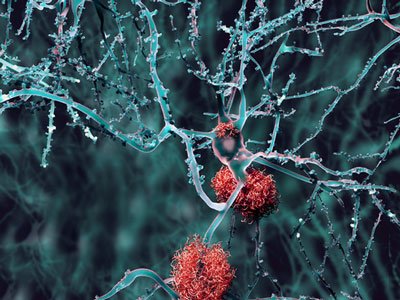Researchers evaluate tau phosphorylation related targets for Alzheimer’s research
Posted: 1 March 2018 | Drug Target Review | No comments yet
Scientists in Moscow have extended the reach of QSP modelling by applying it to tau phosphorylation to better understand Alzheimer’s disease (AD) progression.


InSysBio continues to investigate the mechanisms underlying Alzheimer’s disease (AD) using the quantitative systems pharmacology (QSP) modelling approach. Their research utilising the QSP model to describe the tau protein has now been published, which totals more than a dozen of the company’s publications in the AD area over the last seven years.
Despite a lack of clear understanding regarding what drives AD progression, the main hypotheses of the pathology are based on amyloid beta plaques or tau protein aggregation.
Tau protein in AD patients
Tau protein (or MAPT, microtubule-associated protein tau) stabilises the cytoskeleton in normal cells, but it doesn’t function properly in the neurons of AD patients. Instead, it undergoes hyperphosphorylation and aggregates into neurofibrillary tangles within neurons. Normally, only some of the numerous phosphorylation sites of the protein are phosphorylated; therefore, drugs for the tauopathies treatment could target pathological tau phosphorylation.
Different phosphorylation states contribute to different degrees in the pathology, so understanding the relative contribution of each kinase and phosphatase to phosphorylation of distinct sites is important for searching the principal drug targets. This was the main aim of the research.
If a protein has n phosphorylation sites, then there are 2n possible phosphorylation states. Furthermore, the sequence of protein phosphorylation and dephosphorylation processes is regulated in a complicated way. The model developers assumed that phosphorylation of distinct sites is partially independent, which enabled the combinatorial explosion problem to be overcome.
Four kinases (GSK3β, PKA, CDK5 and p38γ) and one phosphatase (PP2A) were selected from the plurality of tau (de)phosphorylating enzymes. Ten phosphorylation sites of specific interest for the clinical research were selected from a few dozen potentially phosphorylable sites of tau protein. This selection was based on the published experimental data. The modellers also incorporated so-called pseudoresidue, which described phosphorylation sites aside from the ten described above.
This represents the first effort of estimation of tau protein state sensitivity to key enzymes using real kinetic data.
Commenting on the value of their research with respect to AD progression, Alexander Stepanov, the leading article contributor, said: “We’ve taken the first step in understanding of (de)phosphorylation patterns of each tau protein residue by different enzymes. Our model may suggest the role each tau kinase or phosphatase plays in AD pathogenesis, as well as the most potent targets for its treatment,”.
“The published model is another brick in the integrated QSP model, now developed in InSysBio, that may help to find the treatment for AD,” said Tatiana Karelina, PhD, Head of the Neurodegenerative Diseases modelling group at InSysBio.
The research was published in the PLOS ONE journal.
Related topics
Disease research, Enzymes, Protein Expression, Proteomics
Related conditions
Alzheimer’s disease
Related organisations
InSysBio
Related people
Alexander Stepanov, Tatiana Karelina PhD


